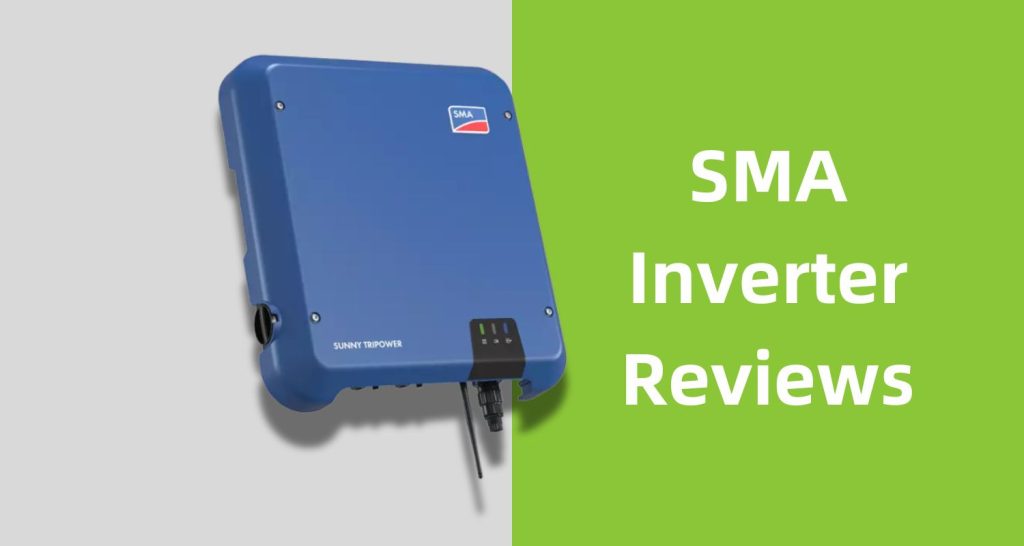SMA Solar Inverters are renowned globally for their exceptional quality and advanced solar energy technologies. With their German engineering and focus on sustainability, SMA inverters have become a popular choice for residential and commercial solar systems. This comprehensive review will explore SMA inverters’ pros and cons, costs, technologies, and limitations. We’ll also address commonly asked questions, providing concise answers to help you decide if SMA inverters are the right choice for your solar needs.
SMA Inverter: Pros and Cons
Pros:
- High Efficiency: SMA inverters deliver impressive energy efficiency, reaching up to 98.7% for some models.
- Reliable Performance: Built with German precision, SMA inverters are known for their durability and reliability.
- Wide Product Range: SMA offers a variety of inverters, including grid-tied, off-grid, and hybrid models, catering to diverse energy needs.
- Smart Monitoring: With features like Sunny Portal and SMA Energy App, users can monitor energy production in real-time.
- Warranty Options: SMA offers a 5-year standard warranty, which can be extended to 10 or 20 years for added peace of mind.
Cons:
- Higher Price: SMA inverters are premium products that may cost more than brands like Sungrow or Growatt.
- Complex Installation: Advanced features require skilled professionals to install them, increasing labour costs.
Limited Battery Compatibility: Some older models may not be compatible with newer battery storage systems.
Is SMA or Fronius Inverter Better?
SMA and Fronius are leading solar inverter brands, catering to slightly different audiences.
- SMA Inverters are known for superior efficiency, advanced technologies, and German engineering. They are ideal for users seeking robust performance and reliable monitoring tools.
- Fronius Inverters are equally efficient but are more focused on user-friendly features and hybrid capabilities, making them suitable for homes with battery storage systems.
Conclusion: If efficiency and precision are your top priorities, SMA is an excellent choice. However, Fronius might be more suitable for hybrid setups and advanced battery compatibility.
How Much Do SMA Inverters Cost?
SMA inverter prices vary based on the model and capacity. Here’s a breakdown of average costs:
- SMA Sunny Boy (3–6 kW): $1,500–$2,500 (without installation).
- SMA Tripower (5–25 kW): $2,000–$5,000 (without installation).
- SMA Sunny Island (Off-Grid): $3,000–$6,000 (without installation).
Depending on system complexity, installation costs typically range from $500 to $1,500. While SMA inverters are on the higher end of the price spectrum, their durability and efficiency often make them worthwhile investments.
Get in touch with Greenlight Solar to get the best SMA Inverter Quote with installation.
Are SMA Inverters Noisy?
SMA inverters are generally quiet during operation. However, like most string inverters, they may emit a low humming noise when operating at maximum capacity.Placing the inverter in a utility room or outdoor area for residential installations helps minimize noise concerns. The SMA Sunny Boy series is particularly appreciated for its silent operation, making it suitable for homes where noise levels are considered.
SMA Inverter Technologies
SMA inverters are equipped with advanced technologies that enhance energy efficiency and system performance:
- Sunny Portal: SMA’s cloud-based monitoring platform allows users to track energy production, analyze performance, and receive system updates.
- ShadeFix Technology: Optimizes energy yield even when panels are partially shaded.
- Battery Storage Integration: Certain models, like Sunny Boy Storage, support battery-compatible hybrid systems.
- Secure Power Supply (SPS): Provides backup power for essential devices during grid outages.
- Multi-String Design: Allows multiple panel arrays connected to a single inverter with different orientations.
These innovations make SMA inverters a reliable and efficient choice for solar systems of all sizes.
Limitations of SMA Solar Inverters
While SMA inverters are highly regarded, they have a few limitations:
- Higher Initial Cost: The premium price may not suit budget-conscious buyers.
- Limited Compatibility: Older models may not support all battery storage systems.
- Complex Setup: Advanced features require experienced technicians for installation and maintenance.
Warranty Terms: The standard 5-year warranty is shorter than some competitors, though it can be extended at an additional cost.
How Do SMA Inverters Compare in Longevity?
SMA inverters are built for long-term performance, with many users reporting smooth operation for 10–15 years or more. Their robust design and advanced cooling systems reduce wear and tear, ensuring minimal maintenance. Regular servicing and proper installation further enhance the longevity of SMA inverters, making them a cost-effective choice in the long run.
Are SMA Inverters Suitable for Off-Grid Systems?
Yes, SMA inverters are well-suited for off-grid solar systems. The SMA Sunny Island series is specifically designed for off-grid applications, offering seamless integration with battery storage. These inverters provide reliable power in remote locations, making them popular for off-grid households and businesses.
SMA Inverter Reviews: Customer Feedback
Customers consistently praise SMA inverters’ efficiency, reliability, and advanced monitoring tools. Positive reviews highlight their durability and ease of use in the Sunny Portal app. While some users note the higher cost, most agree that the quality and performance justify the investment.
Conclusion: Should You Choose SMA Inverters?
SMA inverters are reliable for those seeking high-efficiency, long-lasting solar solutions. Their advanced technologies, durable design, and wide range of models cater to both residential and commercial energy needs. Although they are more expensive, their performance and reliability make them a worthwhile investment for anyone looking to harness the power of solar energy.
Frequently Asked Questions About SMA Inverters
Alternatives include Fronius, Huawei, and Enphase inverters. While SMA excels in efficiency and reliability, these brands may offer lower costs or advanced hybrid features.
SMA provides a straightforward warranty process. Depending on the model, users can register their inverter online to extend the standard 5-year warranty up to 10 or 20 years.
Yes, SMA offers a range of inverters specifically designed for commercial and industrial solar systems. The SMA Tripower series is particularly popular for large-scale installations due to its efficiency and scalability.







